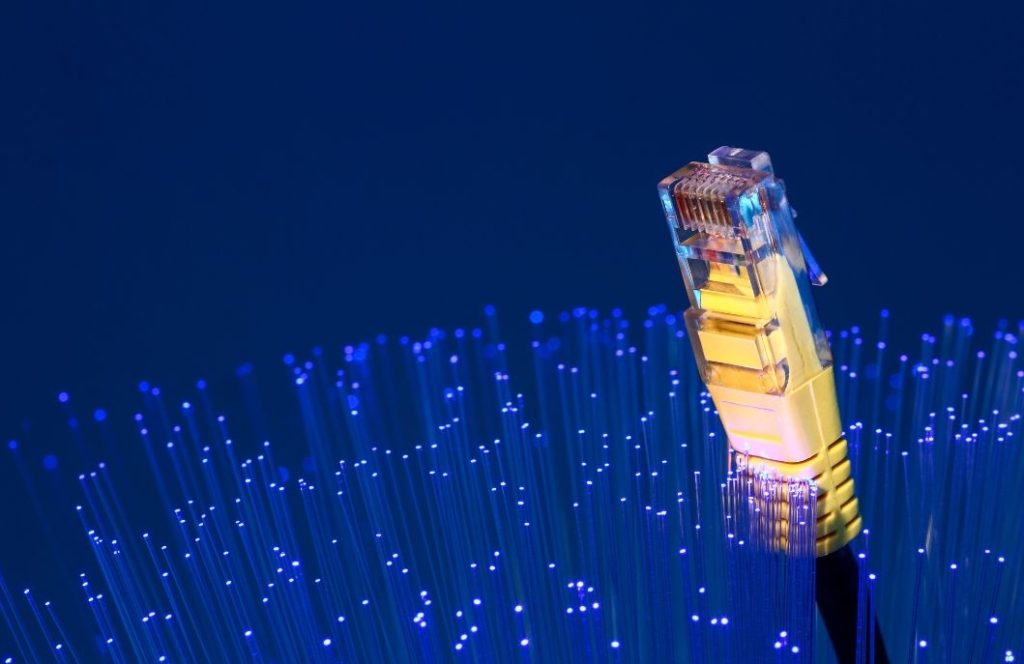In the global communications landscape, fibre optic cables are pivotal, facilitating swift and reliable data transmission worldwide.
This technology has revolutionised connectivity, rendering vast distances negligible and supporting the burgeoning demand for high-speed, low-latency networks.
The fibre optics industry is dynamic, with continuous advancements enhancing capacity and efficiency to meet modern digital needs. For engineers, electricians, and automotive workers, understanding these developments is crucial to harnessing fibre optics’ full potential.
These optic fibre statistics show the significant achievements and prospects of implementing fibre optics, underscoring their indispensable role in today’s interconnected world.
1. The total worth of the Fibre Optics Market is $8.07 billion

The global fibre optics market, valued at approximately $7.72 billion in 2022, is projected to reach around $12.63 billion by 2032. This growth, with a Compound Annual Growth Rate (CAGR) of 5.10% from 2023 to 2032, underscores the significant demand and expansion within the fibre optics industry, driven by its critical role in high-speed, reliable communications across various sectors.
2. 5G Networks are boosting the demand for Fibre Optics
The rollout of 5G technology significantly boosts the demand for fibre optics due to its reliance on high-bandwidth and low-latency networks.
Fibre optic cables are essential for the backbone infrastructure of 5G, enabling rapid data transmission that supports increased network capacity, faster internet speeds, and the connectivity of more devices simultaneously.
This foundational upgrade is crucial for the deployment of 5G services, driving advancements in telecommunications, IoT, and various digital applications, thereby necessitating expanded fibre optic networks.
3. The first country to have full Fibre-Optic coverage was Monaco
It is noteworthy that Monaco has been recognised for its significant achievement in telecommunications infrastructure by becoming the first country to achieve full fibre optic coverage.
This milestone underscores Monaco’s commitment to providing state-of-the-art digital connectivity, ensuring that its residents and businesses enjoy the highest standards of internet speed and reliability, setting a precedent for global telecommunications development.
4. Home security smart cameras demand 18GB-to-400GB of data

Home security cameras require substantial data storage, ranging from 18GB to 400GB monthly, depending on the resolution, frame rate, and hours of footage recorded daily.
High-definition cameras, especially those recording continuously or at peak times, demand more storage to maintain the quality and accessibility of the footage, underscoring the need for robust data handling solutions in modern home security systems.
5. 96% of global broadband connections are faster than 10Mbps
The impressive coverage and performance of global broadband infrastructure are evidenced by the fact that 96% of broadband connections worldwide now exceed speeds of 10mbps.
This significant achievement reflects the extensive adoption of advanced technologies such as fibre optic cables, which offer superior bandwidth and reliability compared to traditional methods.
This widespread high-speed connectivity is crucial for supporting the growing demands of digital communication, streaming, and online services, marking a key milestone in global internet accessibility and efficiency.
6. Optical Fibre prices have increased by 15% since 2018
Since 2018, optical fibre prices have witnessed a 15% increase, attributed to rising demand in telecommunications for higher bandwidth and faster internet speeds. This surge in price reflects the growing need for advanced infrastructure to support burgeoning data consumption and the expansion of fibre optic networks worldwide.
7. IoT Devices require 600 Mbps of Bandwidth

IoT (Internet of Things) devices demand up to 600 Mbps bandwidth to support data-heavy operations, facilitating smooth communication and real-time processing across numerous connected devices.
This requirement is crucial for the efficient functioning of smart technologies.
8. Fibre-Optic Link Around the Globe (FLAG) is a Fibre Optic connection that is over 17,000 miles in length
Fibre-Optic Link Around the Globe (FLAG) is an extensive fibre optic network spanning over 28,000 kilometres (approximately 17,000 miles).
It’s one of the longest undersea cable systems, designed to provide high-speed, high-capacity connectivity across continents. It facilitates global internet traffic, telecommunications, and data transfer with unmatched reliability and efficiency.
9. More than 50 countries have ISPs with 1 Gbps connectivity
Over 50 countries now boast Internet Service Providers (ISPs) offering connectivity speeds of 1 Gbps, marking a significant milestone in global Internet infrastructure.
This widespread availability of gigabit internet underscores the advancing capabilities of fibre optic technology, providing the foundation for ultra-fast, reliable access that supports the increasing demands for data-intensive applications, streaming services, and cloud-based operations in both residential and commercial settings.
10. Europe and the US account for three-quarters of all Fibre Optic investments

Europe and the US collectively contribute to three-quarters of the global investments in fibre optic technology, showcasing their leadership in advancing telecommunications infrastructure.
This dominant share reflects their commitment to enhancing high-speed internet access and digital connectivity, driving significant development in fibre optic networks to support economic growth and technological innovation.
11. Singapore has more fibre optic coverage than any other country in the world
Singapore boasts the highest fibre optic coverage globally, demonstrating unparalleled commitment to digital infrastructure.
This achievement ensures virtually universal access to high-speed internet, underpinning the nation’s status as a leading hub for technology, finance, and innovation. Singapore’s extensive fibre network exemplifies how strategic investments in telecommunications can facilitate widespread connectivity.
12. 58% of the UK is covered by full Fibre Optic connectivity
In the UK, 58% of homes and businesses now enjoy full fibre optic connectivity, a testament to the country’s significant strides towards enhancing its digital infrastructure. This coverage represents a robust foundation for high-speed internet access, pivotal for the digital economy, telecommunication services, and the broader push towards a connected future.
These are just a handful of fibre optic cable statistics from around the world – with how fibre optic connects the world, there is a breadth of information and intrigue out there.
For detailed insights and expertise on fibre optic cables, contact us. Their seasoned professionals offer comprehensive solutions tailored to meet your specific requirements, ensuring optimal connectivity and performance.
Unlock the full potential of fibre optic technology — contact Altimex today for expert solutions and guidance.


